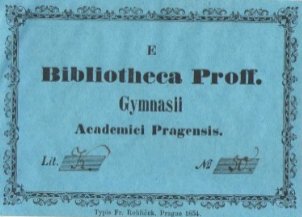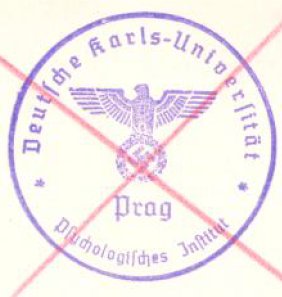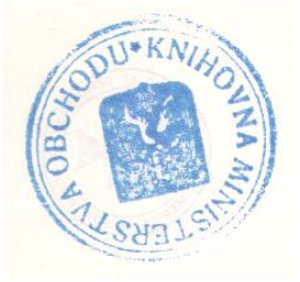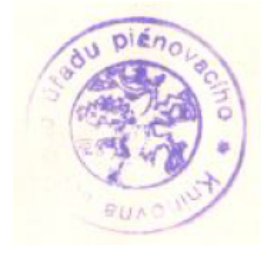Using stamps, among other things, we find out what the journeys of books were
Published on 29 April 2015
All libraries continuously add new titles to their collections. It has become a habit that every new book is entered in the accession book and marked with a stamp by librarians. The books we examine in the project are marked with stamps. Therefore, priority is given to books with a stamp, or even several stamps. What are we able to find out from these stamps and what do they look like?
Over 700 unique stamps and Ex Libris
Thanks to the stamps we can find out what institution a book was located in, and from available information on the institution in question we can deduce, in some cases, when the book was placed there. We have created and continuously extend a catalogue of all the stamps we have come across during our work with the books. Currently, the catalogue contains around 700 unique stamps and Ex Libris.
Our aim is to document 12,000 volumes out of a much larger number of books, which in the course of time found their way to the National Library. The majority of the books from our project were already in Czechoslovakia because they were confiscated from the "Czech" Germans. And it was a long way, taking 50 years, to the National Library depository in Neratovice, where the books are located at present. This depository has been used since the 1990s; before that, the books had been stored in three other depositories. Our historian searches for documents mapping the provenance of the books in large groups. Thus, for the time being we are not examining individual books and their fate, but we are trying to find an effective way to make the best use of the database of stamps.
What institutions play a part in the project?
The stamps come from various institutions and private individuals. We can give several examples from the large number of stamps. Examples from educational libraries include the stamp E Bibliotheca Proff. Gymnasii Academici Pragensis, and a Nazi stamp marking a book from the Department of Psychology of the German Charles University, after Czech universities were closed by the Nazis. An example of a state administration library is the Ministry of Trade library or the State Planning Office library.
Stamps of private persons include, for example, that of August Sauer, the prominent German scholar, literary critic and professor (1855-1926). We have also found Ex Libris of August Sauer in the books we have documented within our project.
A stamp from the public library in Düsseldorf, Germany, is joined by another one recording the removal of the book from the library’s collection. Some stamps are completed with a hand-written year or full date, or crossed out. Stamps of religious orders can also be found (Sigill. Conv. Aquisgr. F.F. Min. s. Francisci Recoll). An interesting example is a stamp from the Chateau library Waagner in Jirna (Schlossbibliothek Waagner in Jirna). Jirna Chateau was bought in 1805 by the Prague entrepreneur Jakub Veith for 250,000 guilders. Later he gave it as a dowry to his daughter Klára, who married Martin Waagner. Stories like this can be encountered in studying the stamps.




